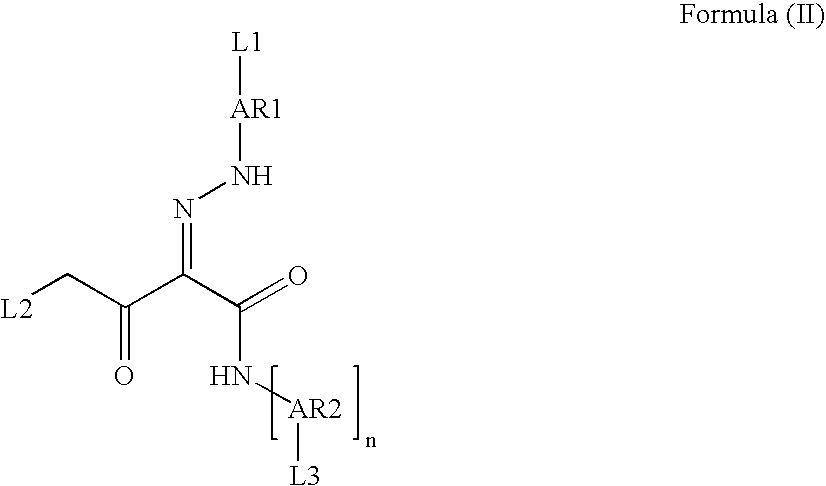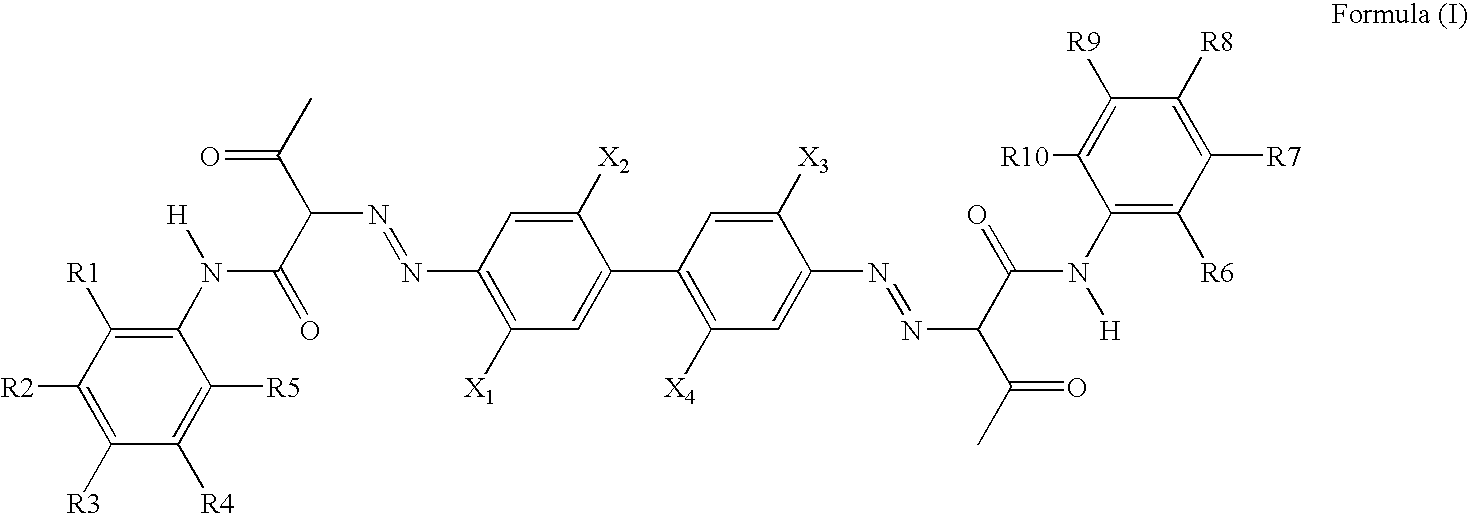Pigment Dispersion with Polymeric Dispersants Having Pending Chromophore Groups
a polymer dispersant and pigment dispersion technology, applied in the field of stable pigment dispersions and pigmented inkjet inks, can solve the problems of reduced dispersion energy required, poor dispersion stability, dispersed pigment particles may have a tendency to re-agglomerate, etc., and achieve the effect of increasing concentration
- Summary
- Abstract
- Description
- Claims
- Application Information
AI Technical Summary
Benefits of technology
Problems solved by technology
Method used
Image
Examples
example 1
[0155]This example illustrates that different pigments for inkjet inks can be dispersed using the same polymeric dispersant having one or more pending chromophore groups similar to the pigments. The polymeric backbone of the dispersant is a homopolymer or an alternating polymer, which are known to have poor dispersing capability. It is also shown that the polymeric dispersants can be obtained by uncomplicated synthesis
Polymeric Dispersants DISP-1 and DISP-2
[0156]VERSICOL E5, a homopolymer of acrylic acid was used as polymeric dispersant DISP-1. The polymeric dispersant DISP-2 was prepared by modifying VERSICOL E5 through esterification with the chromophore MC-2.
Chromophore MC-2
[0157]The formation of the chromophore MC-2 was accomplished by diazotation of compound MC-1D and subsequent coupling in the compound MC-2B.
Preparation of Compound MC-1C
[0158]The vessel used to carry out this reaction was a 3 necked flask equipped with a stirrer, a cooler, and a dropping-funnel. To a solution ...
example 2
[0203]This example illustrates the improved thermal stability of inkjet inks using a polymeric dispersant in accordance with preferred embodiments of the present invention for homopolymer and a statistical copolymer.
Polymeric Dispersants DISP-9 and DISP-10
[0204]A statistical copolymer of AA and STY was prepared as polymeric dispersant DISP-9. The polymeric dispersant DISP-10 was prepared by modifying the polymeric dispersant DISP-9 with the chromophore MC-2.
Synthesis of Polymeric Dispersant DISP-9
[0205]The synthesis was performed in a 250 ml three-necked round bottomed flask which was equipped with a cooling unit, a bubble counter on top and a stirring bar. 18.40 g of the monomer AA, 26.60 g of the monomer STY, 2.65 g of the initiator WAKO™ V601, 2.72 g of the transfer agent alpha-methylstyrene dimer were introduced in 99.64 g of isopropanol. The total weight % concentration of the monomers was 30. The reaction mixture was degassed by bubbling nitrogen in the solution for approximat...
PUM
| Property | Measurement | Unit |
|---|---|---|
| dispersity PD | aaaaa | aaaaa |
| dispersity PD | aaaaa | aaaaa |
| temperatures | aaaaa | aaaaa |
Abstract
Description
Claims
Application Information
 Login to View More
Login to View More - R&D
- Intellectual Property
- Life Sciences
- Materials
- Tech Scout
- Unparalleled Data Quality
- Higher Quality Content
- 60% Fewer Hallucinations
Browse by: Latest US Patents, China's latest patents, Technical Efficacy Thesaurus, Application Domain, Technology Topic, Popular Technical Reports.
© 2025 PatSnap. All rights reserved.Legal|Privacy policy|Modern Slavery Act Transparency Statement|Sitemap|About US| Contact US: help@patsnap.com



